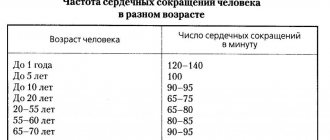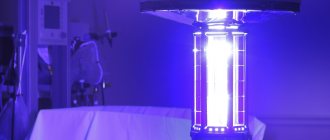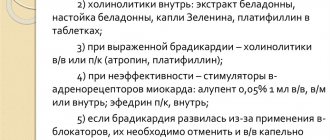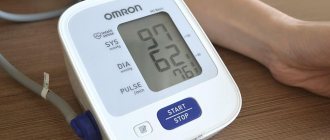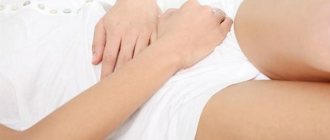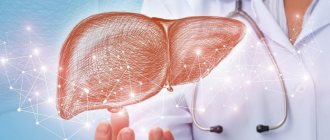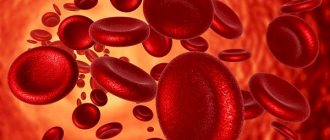Bilirubin is a pigment that is formed in the blood after the breakdown of hemoglobin. Normally, this pigment is the main component of bile. Exceeding the permissible level of pigment may indicate that the patient has jaundice, hepatitis, hereditary bilirubinemia, infectious liver damage, hemolytic anemia, etc. Methods for reducing bilirubin depend on the underlying disease that caused the change in biochemical parameters. So, let's find out how to lower bilirubin in the blood as quickly and effectively as possible.
Normal levels of bilirubin in the blood
Normal values are different for men and women. Typically, women contain less of this pigment. While expecting a baby, bilirubin in the blood rises sharply. You need to constantly monitor these indicators, since their significant increase can signal serious diseases: cholecystitis, viral hepatitis, and hemolytic anemia.
Bilirubin is measured in micromoles per liter of blood. Below we present a table of its normal indicators.
| Normal indicators | In men | Among women |
| General | 3,4 — 17,1 | 3,2 — 17,0 |
| Straight | 0,7 — 7,9 | 0,9 — 4,3 |
| Indirect | not higher than 16.2 | 6,4 — 16,8 |
Bilirubin norms during pregnancy
| Normal indicators | 1st trimester | 2nd trimester | 3rd trimester |
| General | 5 — 21,2 | 5 — 21,2 | 5 — 21,2 |
| Straight | 1 — 8,9 | 1 — 10,1 | 0 — 11,2 |
| Indirect | 3,9 — 21 | 4,5 — 22,8 | 4,9 — 23,9 |
Prevention of high bilirubinemia
Preventive measures include rules that, if followed, will help reduce bilirubin and prevent many other diseases. The main ones:
- adherence to the principles of proper nutrition;
- rejection of bad habits;
- compliance with personal hygiene rules;
- timely scheduled visits to doctors.
To reduce bilirubin in the blood, complex therapy is required. In addition to medications, it includes following a diet and using folk recipes. After recovery, it is recommended to follow measures to prevent high bilirubinemia.
Differences in treatment for newborns and adults
Low bilirubin in newborns
In 99% of cases, with low bilirubin levels in a newborn, any pediatrician will advise parents not to worry and not to panic. Typically, deviations from the norm are observed in premature babies. The indicators will return to normal with proper care and proper nutrition.
It is worth noting that in some cases the cause of low bilirubin in a newborn may be the development of rickets. But a diagnosis can be made with certainty only 2-3 months after birth. During this period, doctors will evaluate the baby's weight gain and overall development.
Treatment for Gilbert's syndrome
With this diagnosis, normal levels of total bilirubin in the blood cannot exceed 20.5 µmol/l. This is a total figure that consists of direct and indirect bilirubin .
- the straight line itself does not pose any particular danger, since it is in an immobilized state
- but the indirect one has the ability to move throughout the body. If it accumulates in large quantities, it can enter the internal organs.
Indicators up to 60 µmol/l
If bilirubin rises to 60 µmol/l, this threatens to have a negative effect on cells and malfunction. At such rates, peripheral tissues may be damaged. Signs of this condition are drowsiness, vomiting, and unstable mental state. Medicines are not used for therapy; blue light is most often used and dietary nutrition is prescribed.
Indicators up to 60 to 80 µmol/l
If bilirubin increases above 80 µmol/l, the breakdown product can penetrate into vital organs. The most vulnerable cells are the brain, heart and respiratory organs. A similar jump in bilirubin in Gilbert's syndrome can be provoked by viral diseases, drug or alcohol abuse. In addition to the above symptoms, sleep problems and nightmares are added. The patient is constantly in a medical facility under the supervision of doctors. Treatment includes phenobarbitals, hepatoprotectors, antitoxic drugs, and absorbents. In extreme cases, blood transfusions are resorted to.
For stomach diseases
About 15-20% of all bilirubin leaves through the intestinal microflora. Also, a share of decomposition products goes away along with processed food products. However, this is only possible with normal functioning of the gastrointestinal tract.
Therefore, if all examinations have shown normal functioning of all organs, but bilirubin is still elevated, it is worth checking the stomach and other digestive organs. Malfunctions in its operation may be associated with poor diet, as well as the use of large amounts of medications or alcohol.
For cirrhosis of the liver
With such a diagnosis, an increase in bilirubin levels is almost inevitable. Since the liver in its normal state is responsible for processing destroyed red blood cells. If the liver is inflamed, it cannot fully function and remove all waste products. As a result, bilirubin accumulates in the body. Symptoms of such a negative process are yellowing of the skin, darkening of urine (to the color of dark beer), and lightening of feces.
Manifestations of pathology
A latent course is characteristic of approximately a third of all cases of the disease. Most often, pathology is detected between 13 and 30 years of age during an examination carried out for another reason - for example, during a medical examination of young men of military age. During exacerbations of Gilbert's syndrome, symptoms depend on the form of the pathology:
- with dyspeptic symptoms - with nausea, heartburn, flatulence, metallic taste in the mouth and pain in the right hypochondrium;
- with asthenovegetative – with weakness, headaches, increased sweating, palpitations, sleep disturbances, anxiety, muscle pain;
- with jaundice - with a bright icteric staining of the skin and sclera without changing the color of the discharge;
- with latent – with the absence of external manifestations.
Some patients experience emotional disorders - depression, irritability, unreasonable fears and panic attacks, and in some cases, an increased tendency to behave in an antisocial manner. Doctors explain these disorders by self-hypnosis associated with mental stress due to the need to visit doctors, take tests and undergo examinations.
Are you experiencing symptoms of Gilbert's syndrome?
Only a doctor can accurately diagnose the disease. Don't delay your consultation - call
Reducing bilirubin levels with medications
Preparations based on herbal ingredients
Medicines based on milk thistle extracts are prescribed. It can improve protein production in damaged cells and prevent further destruction due to its antioxidant properties. Milk thistle also protects liver cells from the negative effects of alcohol and promotes the excretion of breakdown products along with bile. Due to this, the level of bilirubin decreases.
The most popular and effective medicines:
- Silibinin . Prescribed for alcohol poisoning, heavy metals or hepatitis and cirrhosis of the liver. Side effects such as intestinal dysfunction or an allergic reaction are possible.
- Silibor . The duration of the course is from one to two months. In rare cases, after administration, an allergy appears in the form of a skin rash.
- Silymarin-Hexal . Particularly effective for chronic liver diseases or damage caused by toxins. The duration of the course is three months. Therapy with this drug is not recommended for children under 12 years of age.
The following medications will be less strong, but still effective.
- Artichoke extract “ Health ”. Contains artichoke extract and cynarin compound. The medicine normalizes the functioning of the liver and gallbladder, due to which the body is cleared of bilirubin. The drug has a diuretic effect.
- Hofitol . The drug helps remove toxins from the body, while increasing the flow of bile and improving liver function. Can be used both during therapy and as prophylaxis.
Choleretic
The gallbladder is a storage vessel that receives biological fluid after eating. If the gallbladder malfunctions, fluid stagnates in it, which can subsequently result in the formation of sand or stones in the bladder.
The drugs that most effectively help lower bilirubin levels are divided into several groups:
- choleretics (increase bile secretion) - Allohol, Hologon, Osalmid;
- cholekinetics (lower the tone of the biliary tract, increase the tone of the gallbladder, stimulate the excretion of bile) – Sorbitol, Flamin;
- Cholespasmolytics (relax the bile ducts, facilitate the excretion of bile) - Atropine, Metacin, Fubromegan.
Amino acids
Bilirubin can be reduced only when a large amount of amino acids enters the body. They are the basis for all proteins that are present in the body. If red blood cells are destroyed, this signals the need for additional amino acids.
Let's name the most effective drugs that will enrich the body with amino acids:
- Heptral, Heptor, Heparetta (contains ademetionine);
- Hepa-merz (a drug containing ornithine);
- Amvix, Ensil, Previn (these are not medications, but dietary supplements).
How is the disease determined?
The most important methods for diagnosing Gilbert's syndrome are laboratory tests, including:
- general blood and urine tests - there is an increased number of immature red blood cells and slightly decreased hemoglobin in the blood, bilirubin may be present in the urine;
- biochemical blood test - sugar level may be slightly reduced, protein content is within normal limits, ALT and AST are within normal limits, negative result of thymol test;
- blood test for bilirubin - the total content is increased due to an increase in indirect bilirubin;
- blood test for coagulation - no abnormalities;
- analysis for markers of viral hepatitis is negative.
- Serum iron and other blood iron tests are possible.
In addition, the patient must undergo a liver ultrasound to exclude the possibility of other liver pathologies. The size of the liver may increase slightly during periods of exacerbation. Molecular genetic testing of venous blood is rarely performed due to its high cost, but it can identify defective DNA that is the cause of Gilbert's syndrome.
To confirm the diagnosis, stress tests are performed:
- with fasting - with complete fasting or with caloric restriction, the level of free bilirubin increases 2-3 times;
- with phenobarbital - after five days of taking the level of free bilirubin decreases;
- with nicotinic acid - intravenous injection of the drug increases the level of free bilirubin by 2-3 times;
- with rifampicin - administration of the drug leads to an increase in the amount of bilirubin.
To exclude chronic hepatitis or cirrhosis, a liver puncture may be prescribed.
Folk remedies for reducing bilirubin
Before starting therapy with folk remedies, be sure to consult your doctor.
Beet juice
Beetroot juice has a choleretic effect. You only need to squeeze the juice for the daily portion - one glass. Drink 1/3 cup three times a day before meals. You can take this remedy for 20 days. If bilirubin does not return to normal, you need to take a week break and repeat the course. As a preventive measure, take juice according to the same scheme.
Birch bud tincture
You need to collect buds at the earliest stages of their appearance - at this moment the concentration of nutrients is highest. After collection, the buds are dried well. For one serving, a tablespoon of preparations is enough. They are poured with a glass of boiling water and left for 30 minutes. Take every day before bed. Duration of therapy is 15-20 days.
Corn silk
Due to the high content of beneficial elements, corn silk helps remove bilirubin and other toxins from the body. Their use cleanses the blood and improves its clotting.
To prepare the product, pour 100 g of dried raw materials into 200 ml of boiling water. Leave for at least an hour. After this, the tincture is cooled and filtered. The filtered drink is drunk 5 times in small portions. It is necessary to maintain a break between doses of at least 60 minutes. The course of treatment is from 2 weeks.
Milk thistle
To prepare the product you will need a teaspoon of milk thistle seeds. They are poured with a glass of boiling water and left for a third of an hour. The prepared solution is drunk throughout the day. The duration of the course should not exceed 3 weeks. If necessary, therapy can be resumed after a week's break.
Soda
Mix a teaspoon of soda in a glass of warm water and drink in small sips within an hour after the first meal. The course of treatment is 10 days.
What is bilirubin
Bilirubin is a yellow-brown pigment that is formed due to the breakdown of red blood cells and is detected in bile and blood. If the level of the indicator does not exceed the norm, there is no danger to health. Bilirubin has the following forms:
- Direct – bound bilirubin is removed from the blood and body through the organs of the excretory system and is not hazardous to health. The norm is 1.8-5.2 mmol/l.
- Indirect – pigment, is highly toxic and can provoke the development of pathologies. The standard level is 3.5-12 mmol/l.
- Total bilirubin - the normal value is 8.5-20 mmol/l.
To determine the level of pigment, a biochemical blood test and urine test are performed. The indicator indicates the state of functional activity and metabolism of the liver. Bilirubin increases with adrenal, hepatic and subhepatic jaundice - the type of disease depends on the location of the inflammatory process. With an excess of pigment, the skin and mucous membranes acquire a yellowish tint.
Important! The bilirubin level is critical if the value exceeds 300 mmol/l.

